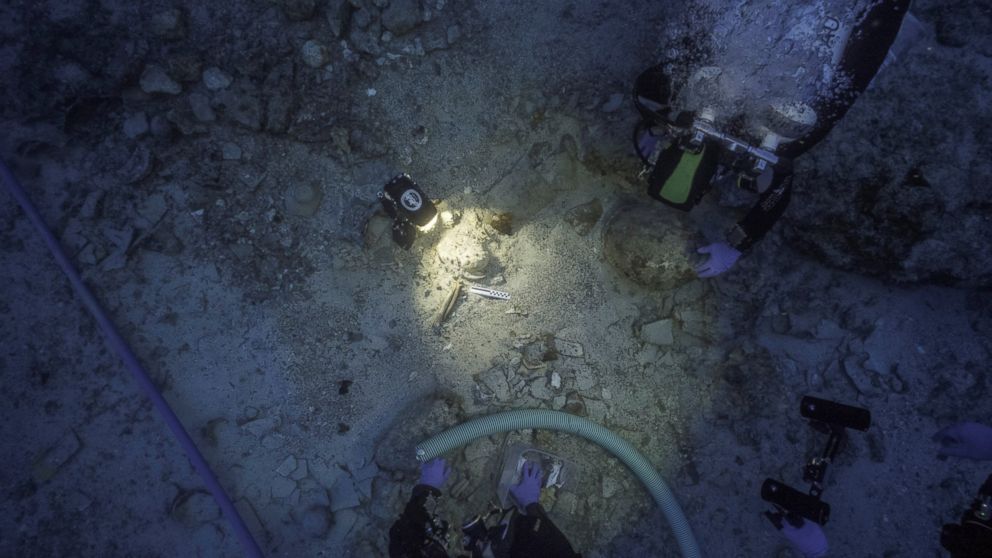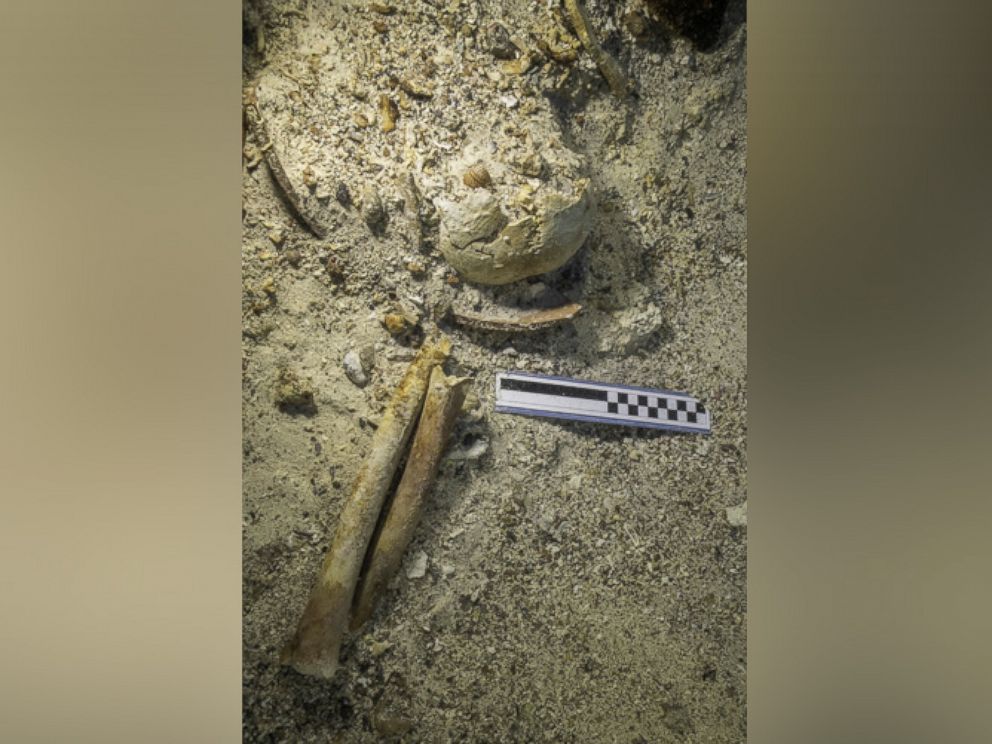2,000-Year-Old Skeleton Found on Greek Shipwreck Could Push Boundaries of DNA Analysis
Scientists believe the find could push the boundaries of DNA analysis.

— -- Underwater archaeologists recently discovered a 2,000-year-old skeleton on a famous shipwreck off the tiny Greek island of Antikythera, according to the scientific journal Nature.
The wreck was the first ever investigated by archaeologists after it was originally found by sponge divers in 1900, Nature reported. At the time, the most incredible find on the wreckage of the merchant ship was the "Antikythera mechanism," a sophisticated clockwork device that models the motions of the sun, moon and planets.
But this skeleton could be an even more incredible find for scientists, who are excited about the possibility of a first-ever DNA analysis of an ancient shipwreck victim.
"Your mind starts spinning," said Hannes Schroeder, an expert in the analysis of ancient DNA who is from the Natural History Museum of Denmark in Copenhagen.

"Who were those people who crossed the Mediterranean 2,000 years ago?" Schroeder said in Nature. "Maybe one of them was the astronomer who owned the mechanism."
Schroeder said the discovery could give him the chance to push the boundaries of the study of ancient DNA.
"I’ve been trying to push the application of ancient DNA into environments where people don’t usually look for DNA," he said.
Schroeder was part of a team that published the first genome sequence of a Neolithic skeleton from Spain found in the Mediterranean, Nature noted.
DNA from the 2,000-year-old skeleton found in the shipwreck could provide information about the victim's characteristics, including gender, hair, eye color, ancestry and geographic origin, Schoroeder said.

The skeleton could be that of a crew member, passenger or slave on the merchant ship, according to Mark Dunkley, an underwater archaeologist from the London-based heritage organization, Historic England.
Dunkley speculated about the possibility of the 2,000-year-old skeleton being a slave, saying in Nature that the "crew would be able to get off relatively fast" during an accident, but those shackled "would have no opportunity to escape."
Interestingly, the skeleton was found surrounded by corroded iron objects, according to Nature.
As Schroeder waits permission from Greek authorities to perform a DNA extraction, he and his colleagues have decided to nickname the skeleton Pamphilos -- a name that underwater archaeologists found neatly scratched on a wine cup from the wreck.




